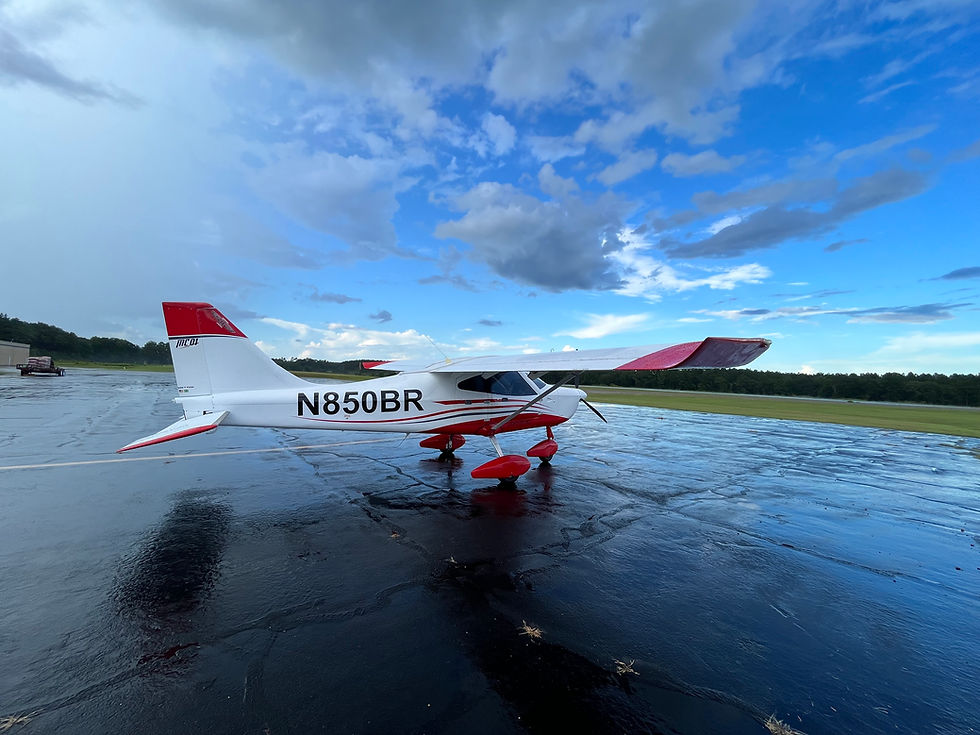Elevating Safety in Aviation: The Role of Advanced Technology
- Shalom Confessor
- Jan 9, 2023
- 3 min read

Safety is of the utmost importance in aviation. The consequences of even a small mistake can be catastrophic, which is why it is crucial for pilots, maintenance personnel, and all other aviation professionals to prioritize safety at all times.
There are many ways that the aviation industry works to promote safety. One key way is through the development and implementation of strict regulations and guidelines. These regulations cover everything from the design and maintenance of aircraft to the training and qualifications of pilots and other aviation professionals.
Another important aspect of aviation safety is the use of advanced technology. From flight recorders and collision avoidance systems to weather forecasting and GPS navigation, technology plays a vital role in helping pilots make informed decisions and safely navigate the skies.
However, technology and regulations alone are not enough to ensure safety in aviation. It is also crucial for everyone in the industry to have a strong safety culture and to prioritize safety in their daily work. This includes regularly reviewing and updating safety procedures, conducting thorough pre-flight checks, and communicating openly and honestly about safety concerns.
Ultimately, safety in aviation requires a combination of advanced technology, strict regulations, and a strong safety culture. By working together and always prioritizing safety, the aviation industry can help ensure that everyone who takes to the skies does so safely and confidently.
Aviation safety has come a long way in the past century, thanks in large part to the development and implementation of advanced technology. From improved navigation and communication systems to advanced weather forecasting and aircraft design, the use of technology has played a vital role in reducing the number of accidents and incidents in the aviation industry.
One of the most significant technological advances in aviation safety has been the development of the global positioning system (GPS). This satellite-based navigation system allows pilots to accurately determine their position and track their progress, ensuring that they stay on course and avoid potential hazards.
Another important technological advancement has been the development of advanced weather forecasting systems, which allow pilots to accurately predict and prepare for adverse weather conditions. This includes real-time updates on turbulence, thunderstorms, and other weather-related hazards, as well as alerts for extreme conditions such as icing or extreme winds.
Another area where technology has greatly improved aviation safety is in the design of aircraft. Modern planes are built with advanced materials and construction techniques that make them stronger, lighter, and more resistant to damage. They also feature redundant systems and backup systems to ensure that if one component fails, there are others in place to take over and keep the aircraft flying safely.
In addition to these technological advancements, there have also been significant improvements in training and education for pilots and other aviation professionals. This includes simulator training, which allows pilots to practice and hone their skills in a controlled environment, as well as ongoing education and training programs to ensure that they remain current on the latest safety protocols and procedures.
Overall, the use of advanced technology has played a vital role in improving aviation safety and reducing the number of accidents and incidents. From GPS and weather forecasting to aircraft design and training, these technological advances have helped to make flying safer for everyone.
As a company that is always looking to improve and innovate, MONTAER understands the importance of incorporating advanced technology into their aircraft. From advanced avionics systems to state-of-the-art safety features, MONTAER is dedicated to providing their customers with the best and most reliable aircraft on the market.
One example of MONTAER's commitment to technology is their use of advanced avionics systems, which provide pilots with critical information and tools needed to safely navigate and operate their aircraft. These systems can include things like GPS navigation and communication equipment, all of which are essential for safe flight.
Additionally, MONTAER also incorporates a variety of safety features into their aircraft, including redundant systems, crash-resistant structures, and emergency backup systems. These features are designed to protect pilots and passengers in the event of an emergency, and provide an extra layer of protection against potential accidents or incidents.
Overall, MONTAER's focus on advanced technology and safety sets them apart as a leader in the aviation industry. By constantly innovating and looking for ways to improve their aircraft, MONTAER is able to provide their customers with the peace of mind and confidence they need to fly with confidence.





I agree completely! I’m still taking safety classes to this very day! I joined the FAAST Team to increase my  proficiency and safety while flying. I also continue taking classes in weather training to increase my awareness of the weather conditions, learning all I can about weather fronts. After all IMC conditions cause many GA fatalities. I think everyone should join the FAAST site.